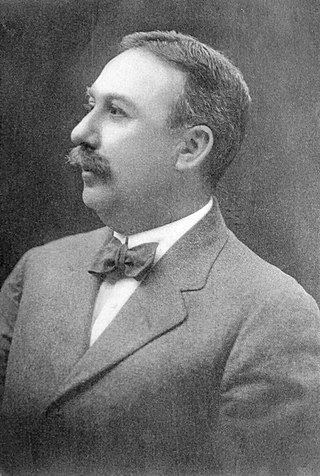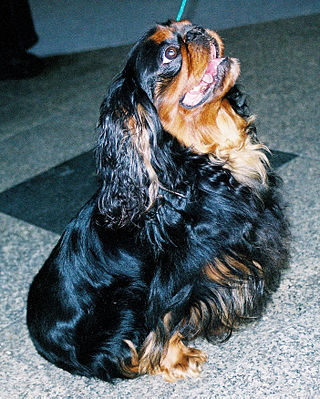
A hot dog is a dish consisting of a grilled, steamed, or boiled sausage served in the slit of a partially sliced bun. The term hot dog can refer to the sausage itself. The sausage used is a wiener or a frankfurter. The names of these sausages commonly refer to their assembled dish. Hot dog preparation and condiments vary worldwide. Typical condiments include mustard, ketchup, relish, onions in tomato sauce, and cheese sauce. Other toppings include sauerkraut, diced onions, jalapeños, chili, grated cheese, coleslaw, bacon and olives. Hot dog variants include the corn dog and pigs in a blanket. The hot dog's cultural traditions include the Nathan's Hot Dog Eating Contest and the Oscar Mayer Wienermobile.

Lady and the Tramp is a 1955 American animated musical romance film produced by Walt Disney Productions and released by Buena Vista Film Distribution. Based on Ward Greene's 1945 Cosmopolitan magazine story "Happy Dan, the Cynical Dog", it was directed by Hamilton Luske, Clyde Geronimi, and Wilfred Jackson. Featuring the voices of Peggy Lee, Barbara Luddy, Larry Roberts, Bill Thompson, Bill Baucom, Stan Freberg, Verna Felton, Alan Reed, George Givot, Dallas McKennon, and Lee Millar, the film follows Lady, the pampered Cocker Spaniel, as she grows from puppy to adult, deals with changes in her family, and meets and falls in love with the homeless mutt Tramp.

The Cavalier King Charles Spaniel (CKCS) is a British breed of toy dog of spaniel type. Four colours are recognised: Blenheim, tricolour (black/white/tan), black and tan, and ruby; the coat is smooth and silky. The lifespan is usually between eight and twelve years.

A corn dog is a sausage on a stick that has been coated in a thick layer of cornmeal batter and deep fried. It originated in the United States and is commonly found in American cuisine.

Edwin Stanton Porter was an American film pioneer, most famous as a producer, director, studio manager and cinematographer with the Edison Manufacturing Company and the Famous Players Film Company. Of over 250 films created by Porter, his most important include What Happened on Twenty-third Street, New York City (1901), Jack and the Beanstalk (1902), Life of an American Fireman (1903), The Great Train Robbery (1903), The European Rest Cure (1904), The Kleptomaniac (1905), Life of a Cowboy (1906), Rescued from an Eagle's Nest (1908), and The Prisoner of Zenda (1913).

The King Charles Spaniel is a small dog breed of the spaniel type. In 1903, the Kennel Club combined four separate toy spaniel breeds under this single title. The other varieties merged into this breed were the Blenheim, Ruby and Prince Charles Spaniels, each of which contributed one of the four colours available in the breed.

Edison Studios was an American film production organization, owned by companies controlled by inventor and entrepreneur, Thomas Edison. The studio made close to 1,200 films, as part of the Edison Manufacturing Company (1894–1911) and then Thomas A. Edison, Inc. (1911–1918), until the studio's closing in 1918. Of that number, 54 were feature length, and the remainder were shorts. All of the company's films have fallen into the public domain because they were released before 1928.
Robert Leo Gretton was the manager of Joy Division and New Order. He was partner in and co-director of Factory Records and a founding partner of The Haçienda. For ten years until his death in 1999, Gretton ran his own label, Rob’s Records.

I Married a Monster from Outer Space is a 1958 American horror science fiction film from Paramount Pictures, produced and directed by Gene Fowler Jr., that stars Tom Tryon and Gloria Talbott. Paramount released the film as a double feature with The Blob.

Different areas of the world have local variations on the hot dog, in the type of meat used, the condiments added, and its means of preparation.
"Frankenfido" is an episode of the British comedy television series The Goodies.
Fortune Dogs is a manga series by Shuji Kishihara and Yasuharu Tomono serialized in Nakayoshi, about the lives of 48 puppies. An anime television series was produced based on the manga.

The bloodhound is a large scent hound, originally bred for hunting deer, wild boar, rabbits, and since the Middle Ages, for tracking people. Believed to be descended from hounds once kept at the Abbey of Saint-Hubert, Belgium, in French it is called, le chien de Saint-Hubert.

La Charcuterie mécanique is an 1895/1896 "humorous subject" created by the Lumière Brothers. In Phil Hardy's The Aurum Film Encyclopedia: Science Fiction it is listed as the first ever science fiction film. The action involves a live pig that is placed into a machine. The pig is then turned into various pork products, which are lifted out of the other end of the machine.
Wallace McCutcheon Sr. was a pioneer cinematographer and director in the early American motion picture industry, working with the American Mutoscope & Biograph, Edison and American Star Film companies. McCutcheon's wealth of credits are often mixed up with the small handful of films directed by his son, Wallace McCutcheon Jr. (1884–1928).
The following is a list of films by Edwin S. Porter, head producer at the Edison Manufacturing Company owned by Thomas A. Edison, between 1900 and 1909. Later films were produced at the Rex Motion Picture Company and Famous Players Film Company.

The Whole Dam Family and the Dam Dog is a 1905 silent short comedy film directed by Edwin S. Porter for the Edison Manufacturing Company. The five-and-a-half minute film was an adaptation of a popular picture postcard featuring a humorously named family. The film introduces each member of the Dam family, and then shows a raucous dinner scene that ends with the Dam dog pulling the tablecloth off the table, and ruining the Dam meal.

How Jones Lost His Roll is a 1905 silent short comedy film directed by Edwin S. Porter. The movie was popular for its clever use of animated title cards — the first example of stop-motion animation in American film.

Laura Comstock's Bag-Punching Dog is a 1901 silent short film directed by Edwin S. Porter. The film depicts a vaudeville act featuring Laura Comstock and her trained dog, a pit bull named Mannie. Comstock's act was currently appearing at Keith's Union Square Theatre.














